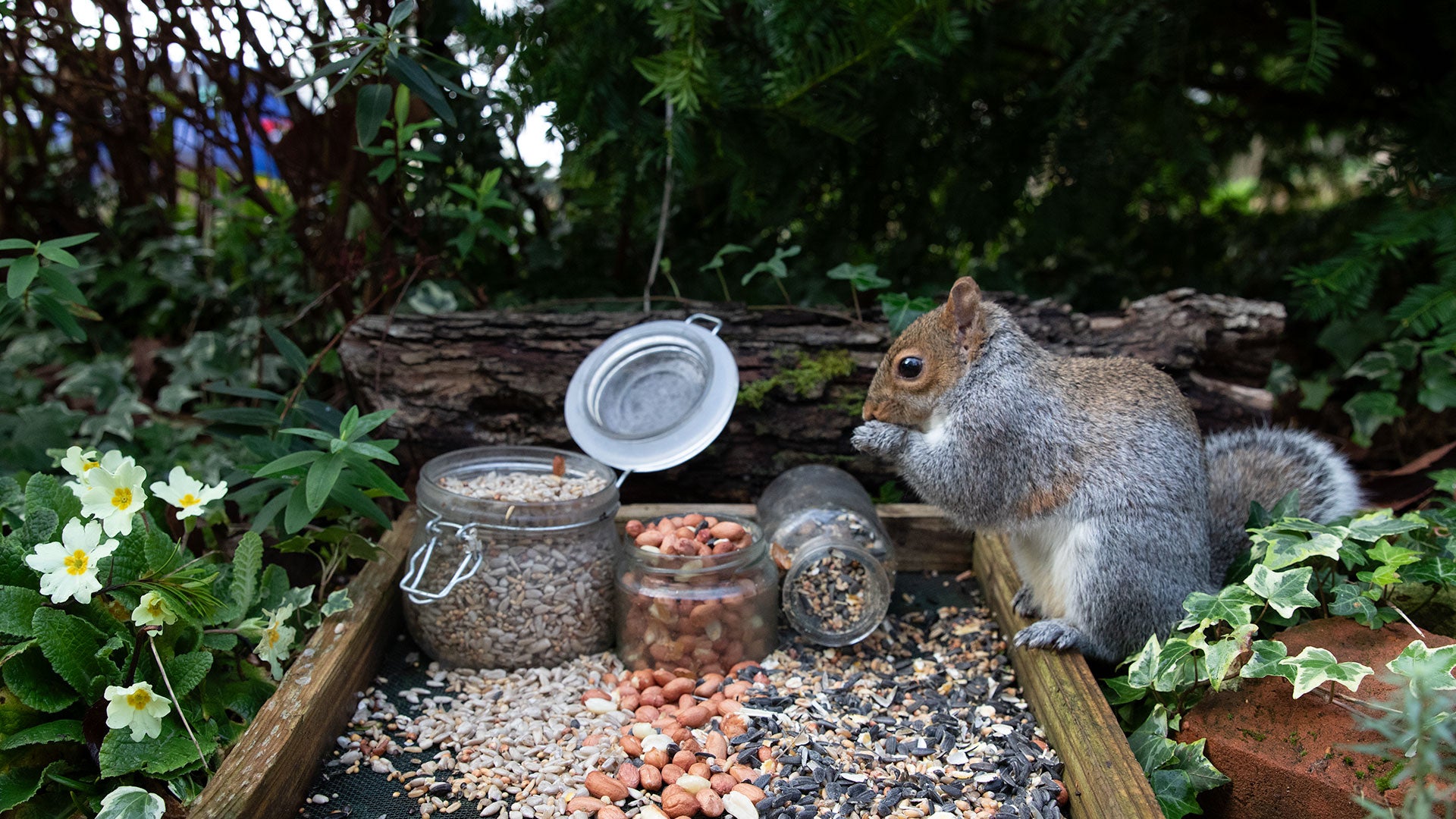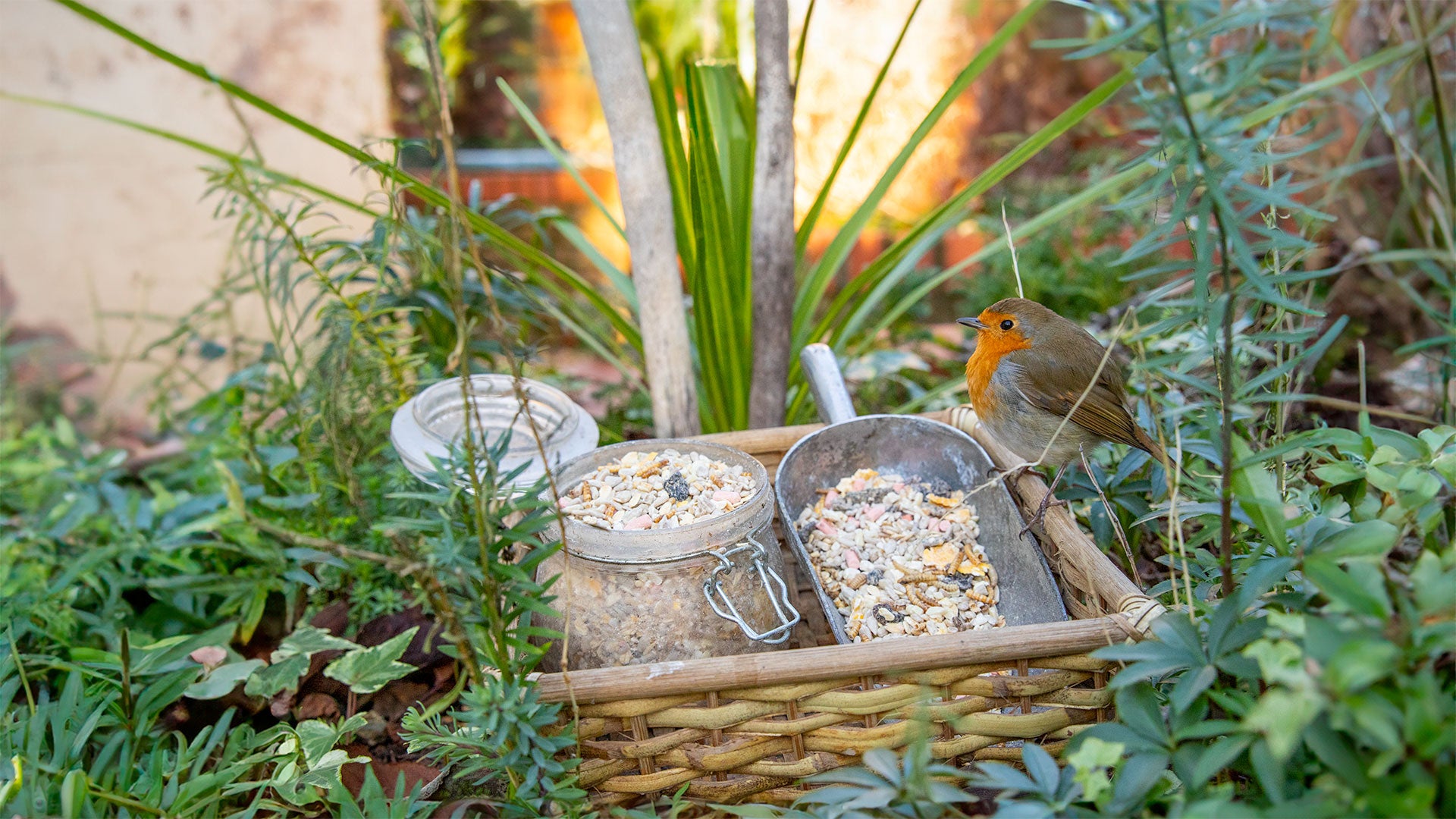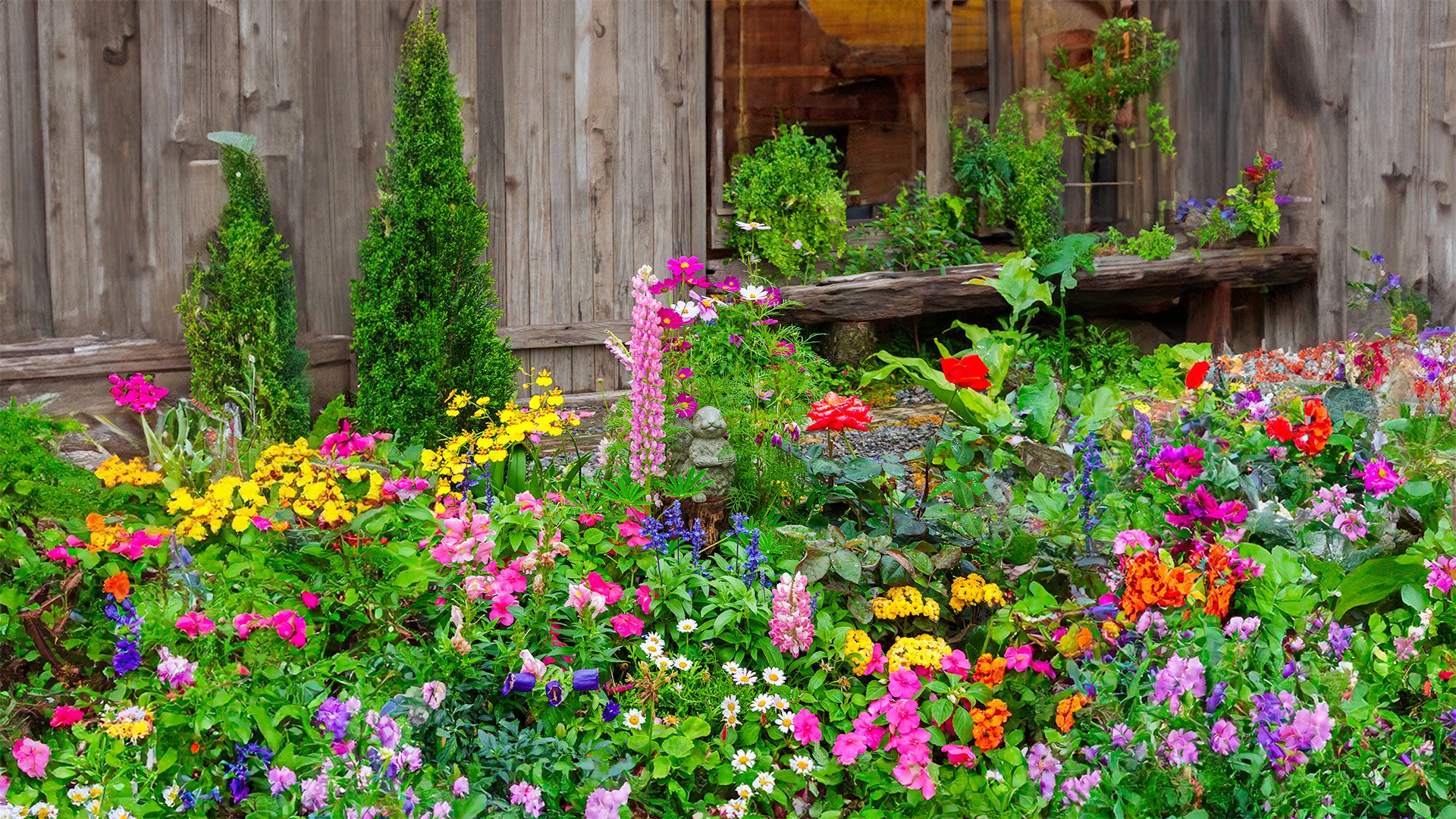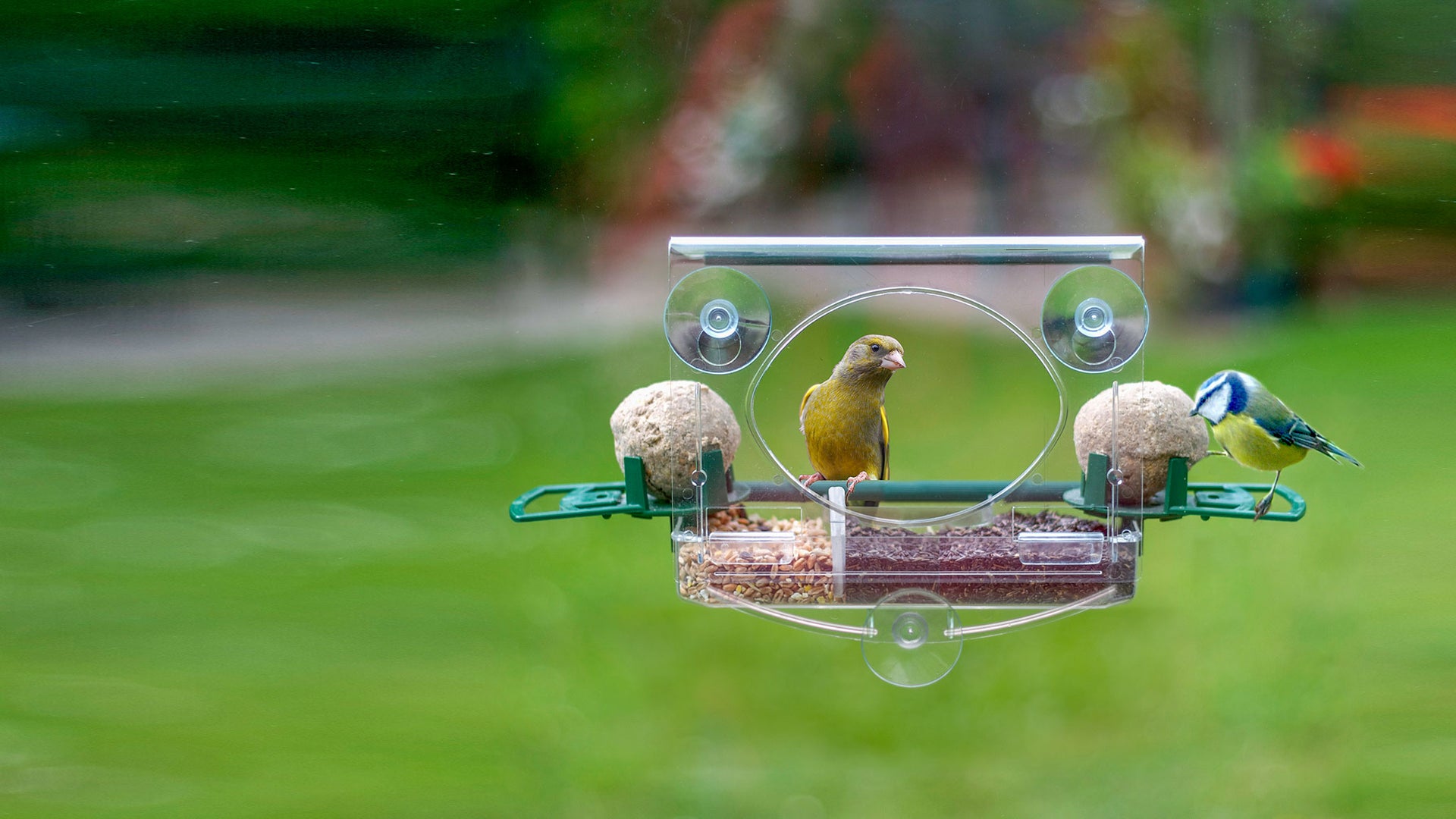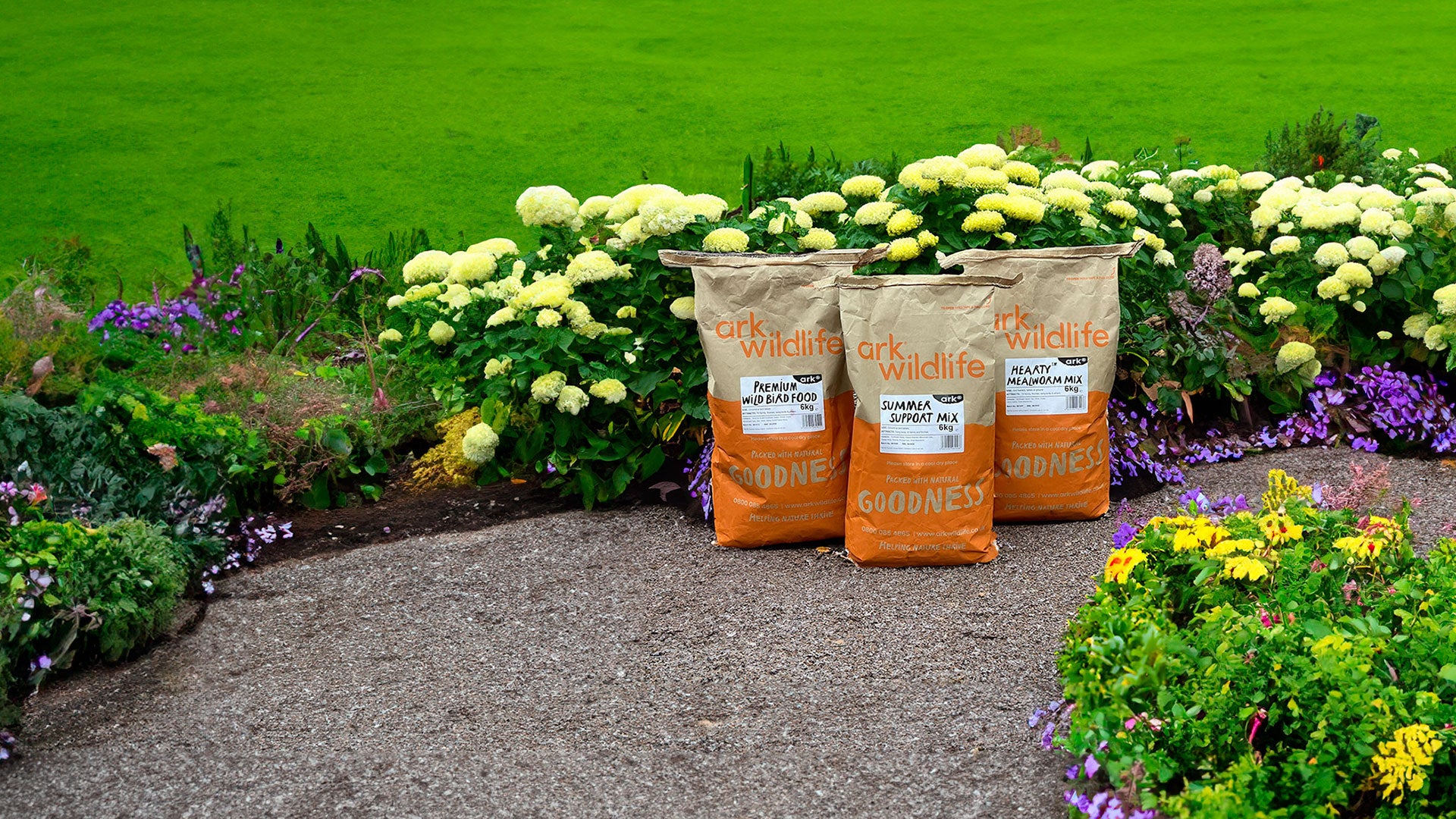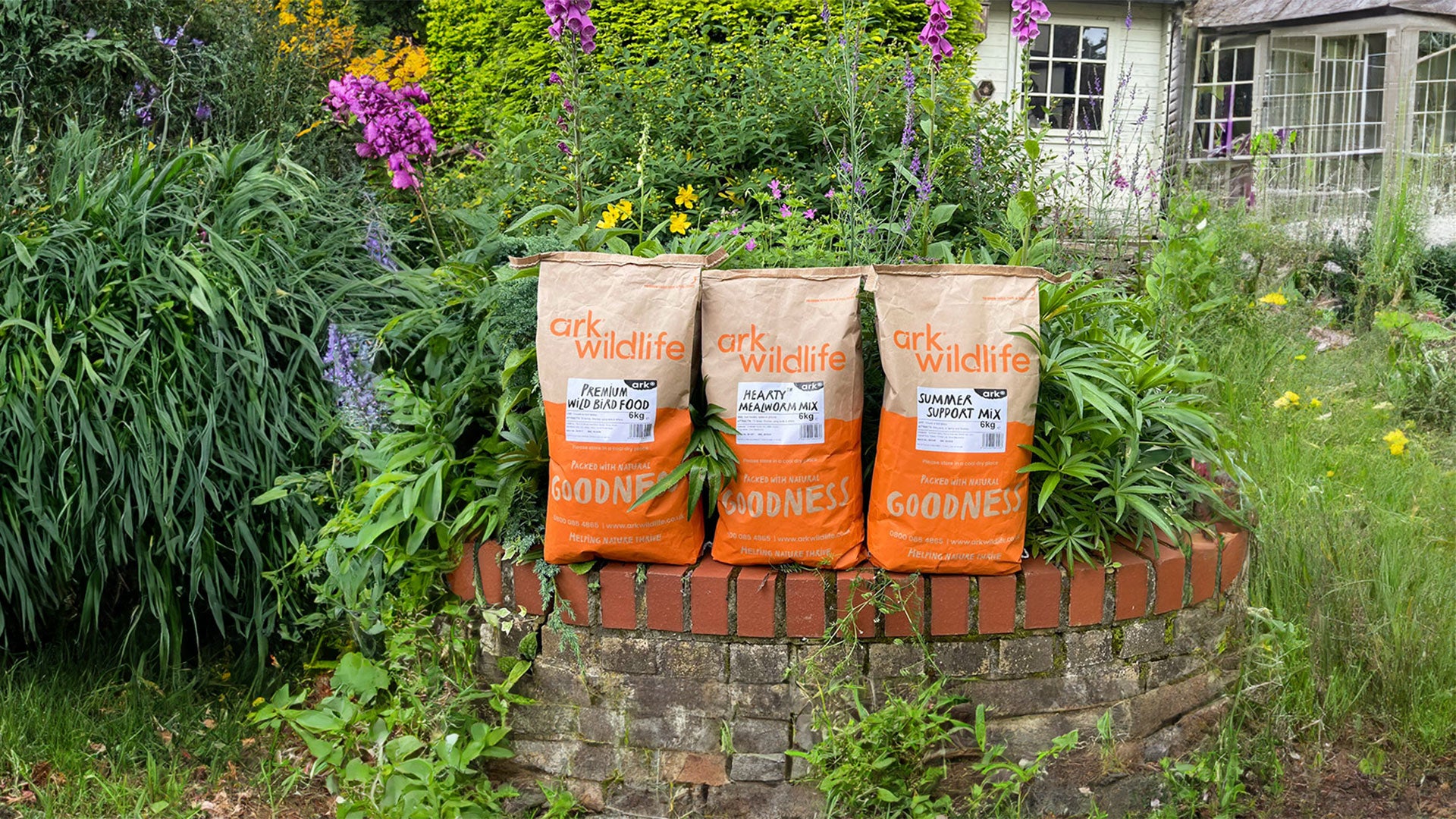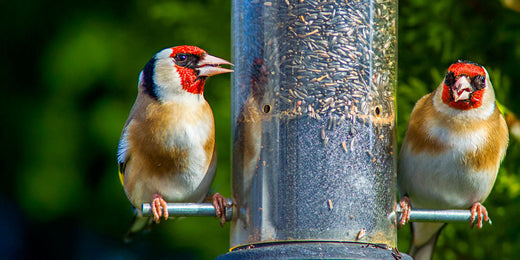What is the collective noun for goldfinches?
A group of goldfinches is known as a charm of goldfinches. These little birds are increasingly visible in gardens, and tend to be easily recognisable because of their red, white and black heads, and their white wings with gold bars on. Males and females look similar, but the red mark on the male tends to extend further back behind the eye – and young goldfinches do not have the red markings until later in the year.

Do goldfinches migrate in winter?
Goldfinches are known as partial migrants, meaning that some of the UK goldfinch population migrate each year to warmer climes, usually in France or Spain. They do not tend to have wintering grounds, instead preferring to go wherever there are opportunities for feeding. Evidence also shows that female goldfinches are more likely to depart for winter than male goldfinches.
How to attract goldfinches to your garden?
There are a number of steps that you can take to make goldfinches more likely to appear in your back garden. Try buying Niger seeds and sunflower hearts as goldfinches are particularly fond of these, but be patient as it may take them some time to discover the food source. Use hanging feeders as they rarely feed on the ground, and tend to feed in groups. You’ll also need a special niger seed bird feeder if feeding this type of seed, since they’re very small and fine.

A Charm of Goldfinches...
Bright red faces, gold wing flashes, contrast plumage and constant chattering all make an impact as a loose flock of goldfinches arrive in the garden.
I’m old enough to remember making trips to farmland and searching country hedgerows to see such colourful treats as goldfinches, yellowhammers and linnets. All still common back then but birds you had to go and find if you wanted to see them, they just didn’t visit gardens.
Over the next few decades all these birds fell into serious decline, sadly, in common with so many species. So, between their plummeting numbers and me having less free time (compared to when I was a lad), sightings became few and far between.
A decade after this I’d started my business called ‘Ark Wildlife’ (Noah’s Ark back then!) and noticed that every February we received multiple very excited calls from customers phoning desperately wanting to know what the ‘amazing little red birds’ in their gardens were. Always the same time year after year. I witnessed it myself, I felt I could set my calendar by their arrival. I surmise that the changes in farming practices, climate and ingress of houses into countryside, all contributed to the exhaustion of their natural food over winter. By February starvation was driving them to seek out food where they least wanted to go – our gardens.

Roll forward a few more years and bird feeding was becoming a mainstream pastime and good companies like mine where investing in research to optimise the nutritional value of the food on offer. Specialist seeds such as Niger Seed, Safflower and Teasel Seeds were also becoming available and where especially attractive to goldfinches and their cousins. Offering such foods worked and goldfinches started to feed in gardens more often and extended their feeding visits over ever more months.
Over the last decade goldfinches have become a fixture of the bird table and bird feeders and astonishingly now regularly appear in the BTO ‘Garden Bird Watch’ top 10 garden visitors. Their population is up and still increasing, and they visit gardens during every month of the year, even bringing their young along as soon as they fledge. They no longer seek special seeds or feeders and will munch happily on Sunflower Hearts alongside, blue tits, chaffinches and sparrows. There are not too many good news stories available to us wildlife lovers, but today’s children only need glance out a window to see and experience the vibrant colour and chatter of a flock of goldfinches just as I remember them from my youth and that surely is a real charm for us all.
Footnote:
The collective noun for goldfinches is ‘A Charm’




